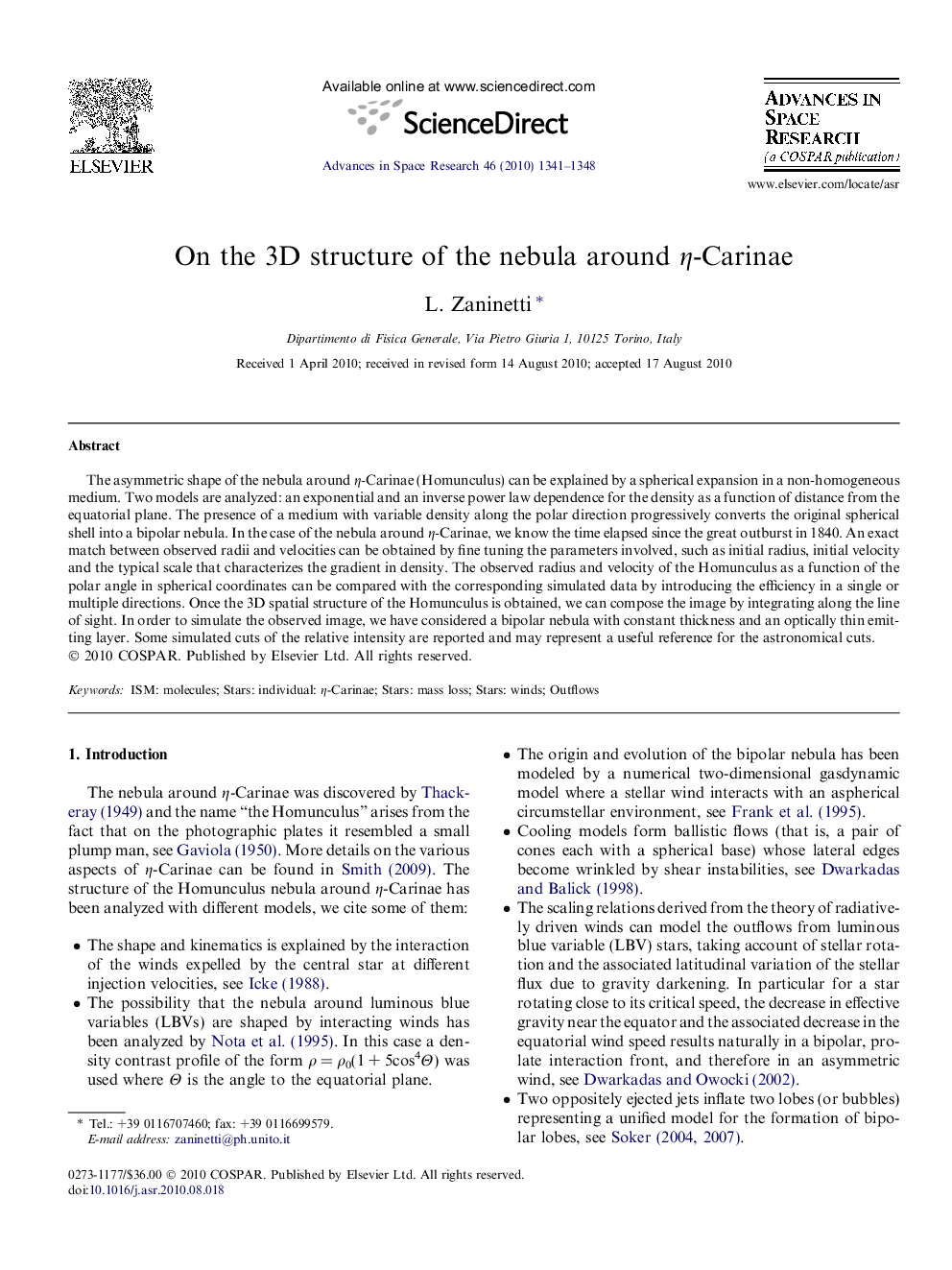| Article ID | Journal | Published Year | Pages | File Type |
|---|---|---|---|---|
| 1765375 | Advances in Space Research | 2010 | 8 Pages |
Abstract
The asymmetric shape of the nebula around η-Carinae (Homunculus) can be explained by a spherical expansion in a non-homogeneous medium. Two models are analyzed: an exponential and an inverse power law dependence for the density as a function of distance from the equatorial plane. The presence of a medium with variable density along the polar direction progressively converts the original spherical shell into a bipolar nebula. In the case of the nebula around η-Carinae, we know the time elapsed since the great outburst in 1840. An exact match between observed radii and velocities can be obtained by fine tuning the parameters involved, such as initial radius, initial velocity and the typical scale that characterizes the gradient in density. The observed radius and velocity of the Homunculus as a function of the polar angle in spherical coordinates can be compared with the corresponding simulated data by introducing the efficiency in a single or multiple directions. Once the 3D spatial structure of the Homunculus is obtained, we can compose the image by integrating along the line of sight. In order to simulate the observed image, we have considered a bipolar nebula with constant thickness and an optically thin emitting layer. Some simulated cuts of the relative intensity are reported and may represent a useful reference for the astronomical cuts.
Related Topics
Physical Sciences and Engineering
Earth and Planetary Sciences
Space and Planetary Science
Authors
L. Zaninetti,
